
Dust it, box it, cover it
Now that the main season is over, the house team will be working hard to ‘put the house to bed’ for the winter.
The physical care and conservation of the collection is the responsibility of our Stewards, who clean and cover everything in the Autumn, and re-set the displays before we re-open in the Spring.
Light, dust (most of it brought in by visitors) and changes in the humidity of the air are the main challenges for the preservation of the collections at Waddesdon. Light fades organic materials such as textiles and veneered furniture, changes in RH (humidity) create shrinkage and cracking and dust, if not removed, ends up sticking to objects it covers, which means more surface-damaging effort is needed to remove it. So it takes a lot of work to keep the Manor and all inside it in pristine condition. As much of the house is closed from November to March, this is our key time to do the deep clean.
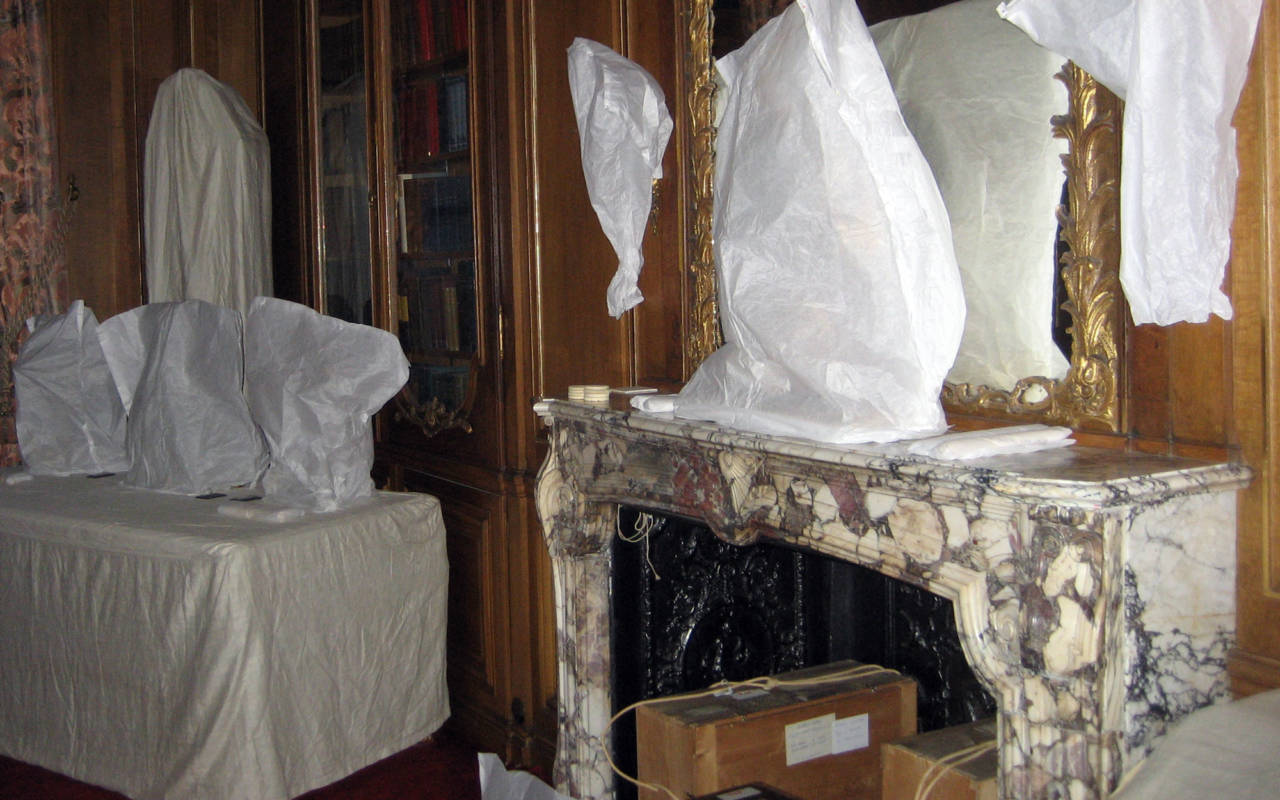
The processes we use are not new. Even in Baron Ferdinand’s time, houses were closed up when their owners were away. His sister, Miss Alice, introduced a set of “Rules” for this activity, which are still followed today. Ferdinand and Alice had an indoor staff of 24. We have far fewer Stewards, but they are all experts in the ins-and-outs of conservation cleaning.
Each room is cleaned from floor to ceiling, including the chandeliers and intricate wood and plasterwork. We get out scaffolding to reach the areas which are higher up, so you definitely need a good head for heights in this job!
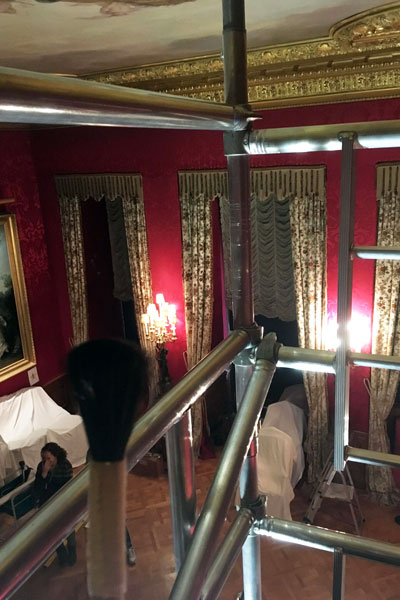
For delicate work we use a very soft pony hair brush, and for sturdier objects a more robust hogs’ hair brush. We make sure to brush the loose dust into the nozzle of a conservation vacuum cleaner so that we aren’t simply moving it around the rooms.
After cleaning, we cover all the large furniture and other objects with bespoke cotton dust sheets or ‘paper hats’ to keep off light and dust during the winter months. You’ll notice that we also do this with our sculptures in the garden to protect them from the frost, which will cause fractures if it gets into cracks.
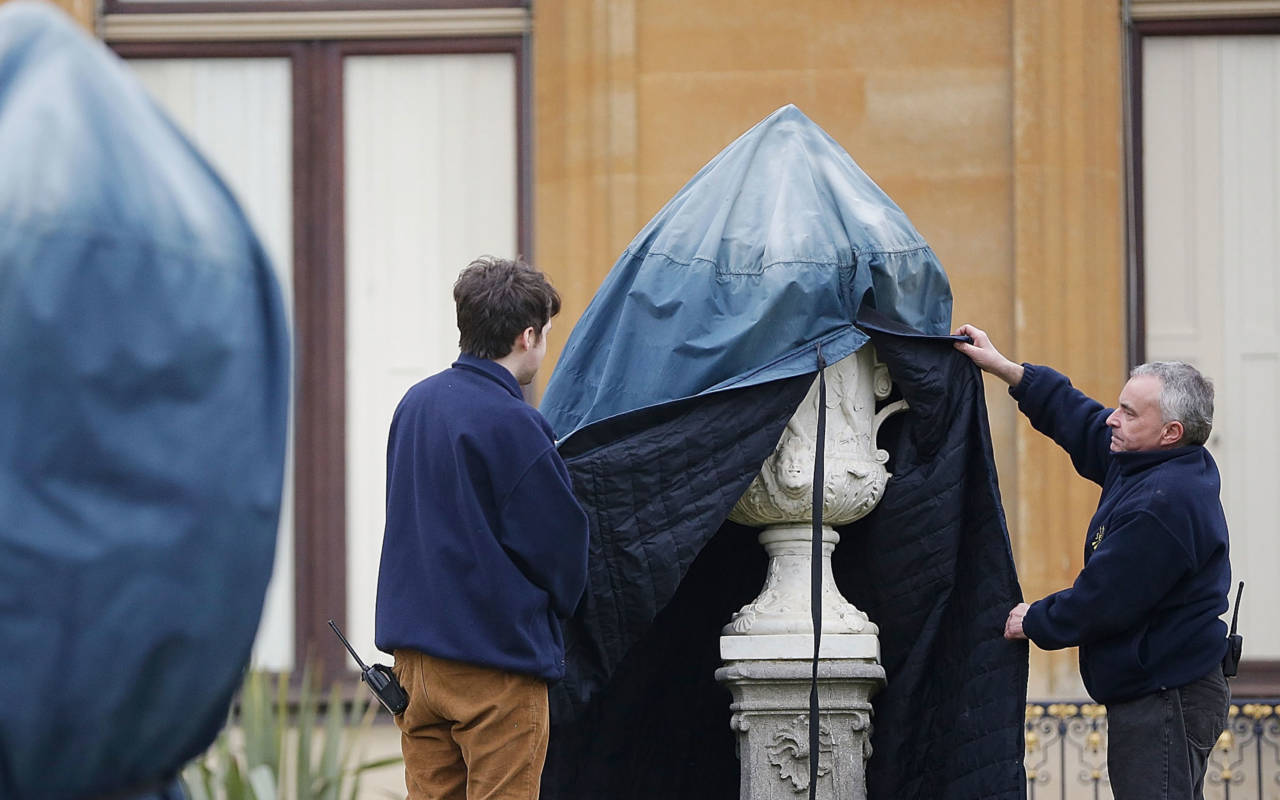
We even roll up the carpets. This both makes them easier to clean, because the pile opens up releasing trapped dirt, and also gives them a rest from light.
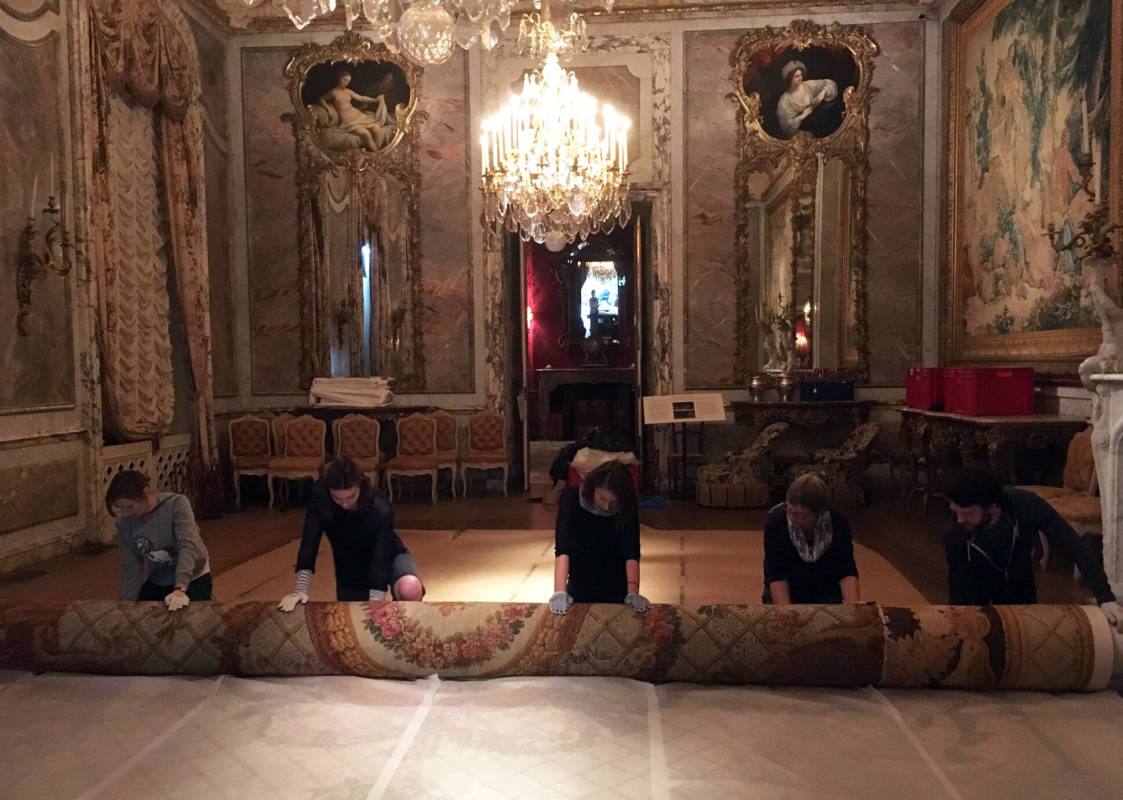
The smaller objects are packed up, and some are taken into our stores. Each piece of porcelain is packed into its own 19th-century wooden box lined with chamois leather. These are stored in the fireplaces as it is the safest place to put them, protected by the mantelpiece above! It’s also important that we keep our object records updated with any changes in their condition, work they have received or if an object has moved location, so we make sure to do this at the same time, on our Collections Management database. People often think that because the house is closed, it is a quiet time for us – in fact, it is one of our busiest times of the year!
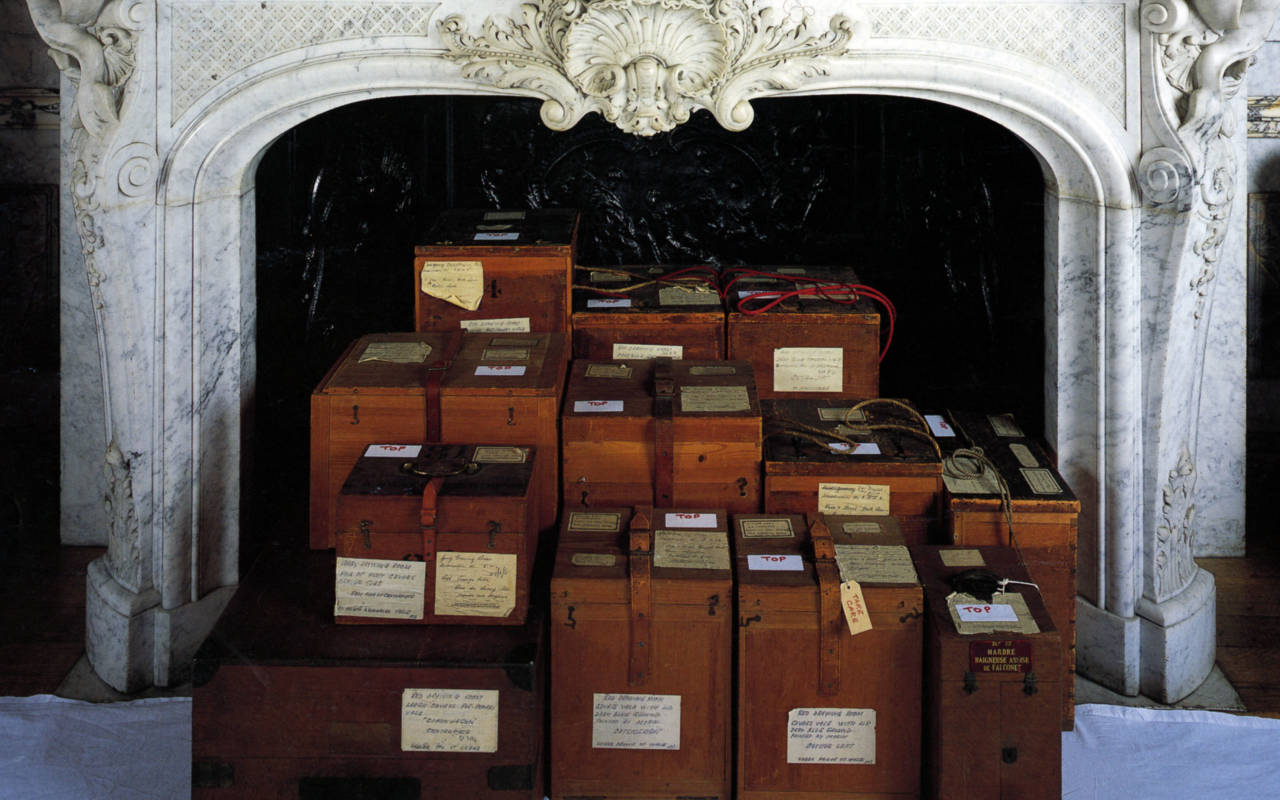
Check out our video to see the team putting the house to bed >




